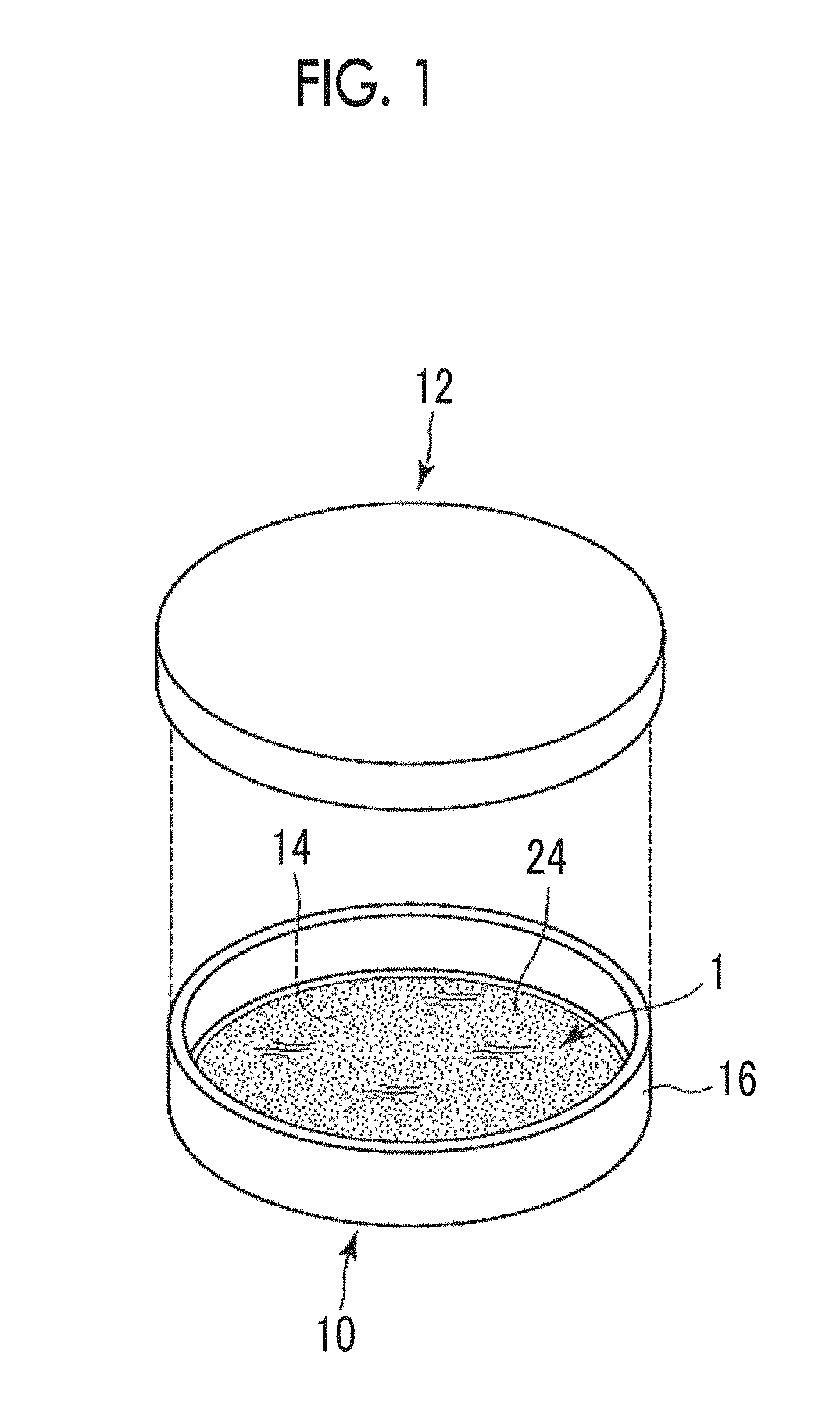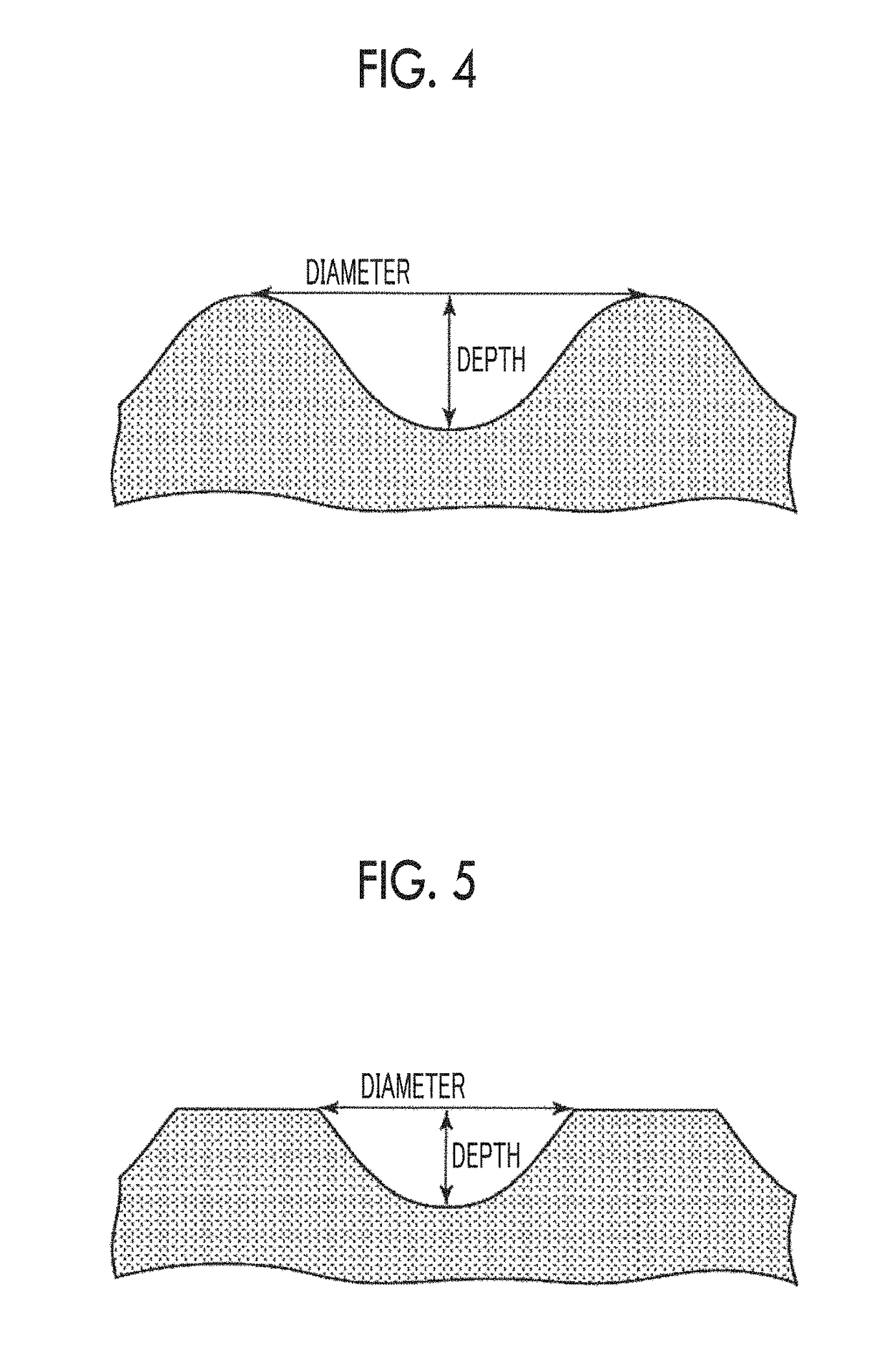Method for producing sheet-like cell structure and sheet-like cell structure
- Summary
- Abstract
- Description
- Claims
- Application Information
AI Technical Summary
Benefits of technology
Problems solved by technology
Method used
Image
Examples
example 1
Recombinant Peptide (Recombinant Gelatin)
[0188]The following CBE3 (which is disclosed in WO2008 / 103041A) was prepared as recombinant peptides (recombinant gelatin).[0189]CBE3:[0190]Molecular weight: 51.6 kD[0191]Structure:
(SEQ ID NO: 11)GAP[(GXY)63]3G[0192]Number of amino acids: 571[0193]RGD sequence: 12[0194]Imino acid content: 33%
[0195]Almost 100% of amino acids have a repeating structure of GXY. In the amino acid sequence of CBE3, serine, threonine, asparagine, tyrosine, and cysteine are not included.[0196]CBE3 has an ERGD sequence.[0197]Isoelectric point: 9.34[0198]GRAVY value: −0.682[0199]1 / IOB value: 0.323
[0200]Amino acid sequence (SEQ ID No: 1 in a sequence table) (which is the same as that of SEQ ID No: 3 in WO2008 / 103041A. However, X in the end is corrected to “P”).
(SEQ ID NO: 1)GAP(GAPGLQGAPGLQGMPGERGAAGLPGPKGERGDAGPKGADGAPGAPGLQGMPGERGAAGLPGPKGERGDAGPKGADGAPGKDGVRGLAGPIGPPGERGAAGLPGPKGERGDAGPKGADGAPGKDGVRGLAGPIGPPGPAGAPGAPGLQGMPGERGAAGLPGPKGERGDAGPKGADGAPGKDGVRGLAGPP)3G
example 2
Production of Porous Body of Recombinant Peptide
[0201][PTFE Thickness⋅Cylindrical Container]
[0202]A cylindrical cup-shaped polytetrafluoroethylene (PTFE) container with a bottom surface thickness of 3 mm, a diameter of 51 mm, a side surface thickness of 8 mm, and a height of 25 mm was prepared. In a case where the curved surface of the cylindrical cup is set as a side surface, the side surface is closed by PTFE with 8 mm and the bottom surface (circular shape of a flat plate) is also closed by PTFE with 3 mm. In contrast, the upper surface is in an open shape. Accordingly, the inner diameter of the cylindrical cup is set to 43 mm. Hereinafter, this container is referred to as a PTFE thickness⋅cylindrical container.
[0203][Aluminum Glass Plate⋅Cylindrical Container]
[0204]A cylindrical cup-shaped aluminum container with a thickness of 1 mm and a diameter of 47 mm was prepared. In a case where the curved surface of the cylindrical cup is set as a side surface, the side surface is closed...
example 3
Production of Biocompatible Macromolecular Block (Pulverizing and Cross-Linking of Porous Body)
[0230]The CBE3 porous bodies which had been obtained in Example 2 were pulverized using NEW POWERMILL (Osaka Chemical Co., Ltd., NEW POWERMILL PM-2005). The pulverizing was performed for one minute×5 times, that is, for 5 minutes in total at the maximum rotation speed. The sizes of the obtained pulverized substances were divided using a stainless steel sieve to obtain uncross-linked blocks with 25 to 53 μm, 53 to 106 μm, and 106 to 180 μm. Thereafter, biocompatible macromolecular blocks (CBE3 blocks) were obtained by performing thermal cross-linking (six kinds of cross-linking times of 8 hours, 16 hours, 24 hours, 48 hours, 72 hours, and 96 hours) at 160° C. under reduced pressure.
[0231]Hereinafter, a porous body-derived block under the condition A which has been cross-linked for 48 hours is called E, and a porous body-derived block under the condition B which has been cross-linked for 48 ...
PUM
| Property | Measurement | Unit |
|---|---|---|
| Fraction | aaaaa | aaaaa |
| Thickness | aaaaa | aaaaa |
| Thickness | aaaaa | aaaaa |
Abstract
Description
Claims
Application Information
 Login to View More
Login to View More - R&D
- Intellectual Property
- Life Sciences
- Materials
- Tech Scout
- Unparalleled Data Quality
- Higher Quality Content
- 60% Fewer Hallucinations
Browse by: Latest US Patents, China's latest patents, Technical Efficacy Thesaurus, Application Domain, Technology Topic, Popular Technical Reports.
© 2025 PatSnap. All rights reserved.Legal|Privacy policy|Modern Slavery Act Transparency Statement|Sitemap|About US| Contact US: help@patsnap.com



